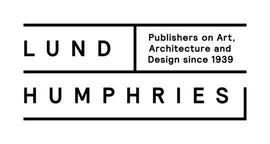British Architectural Sculpture 1851-1951 - by John Stewart
In this blogpost, author of British Architectural Sculpture 1851-1951 John Stewart reflects on the 'lost art of architectural sculpture' and the artistic collaborations that this brought about...

Image: One of sculptor Henry Poole’s groups of Mermen and Mermaids on Cardiff City Hall. Credit: Author’s Collection.
'Now rarely noticed, high above the street, often stained, occasionally providing a home for moss, lichen or even worse, the odd buddleia (and far too often netted to keep pigeons at bay), are some of Britain’s greatest works of art. The richly carved sculptural detail on our historic buildings, not to mention the major allegorical groups, sculpted tympana, pediments and statues, which formed such a significant element of traditional architecture, are the work of master masons, exceptionally gifted stone carvers, and perhaps surprisingly, some of the country’s most important sculptors. The term for this work is "Architectural Sculpture" and though perhaps we do not yet generally appreciate it, we are fortunate in Britain to have one of the world’s finest collections of this art form'.

Image: One of sculptor Catherine Mawer’s many keystones, in this case a self-portrait of one of the 19th century’s few female architectural sculptors. Credit: Sally Whyte.
My latest book is a paean to this lost art of architectural sculpture in which architects and sculptors collaborated to produce the richly carved and beautifully decorated buildings that make up so much of our rich British architectural heritage. While researching the work of Glasgow architects John James Burnet and James Miller for a previous book, I began to understand for the first time, just how their ornate stone buildings were produced and in particular how sculpture was incorporated within them and by whom. What I discovered was a complex process involving masons, stone carvers, architectural sculptors and occasionally fine art sculptors who worked in collaboration with architects to create complex detail and sculpture in stone, terracotta, faience and eventually concrete.

Image: George Frampton’s magnificent bronze St Mungo with supporters at the main entrance to Glasgow's Art Gallery and Museum. Credit: Roger Edwards.
Many of the sculptors involved built their career in sculpture from humble beginnings as stone masons' apprentices, going on to establish their own studios as architectural sculptors and very occasionally as fine art sculptors – Albert Hodge, for example, born on the tiny Hebridean island of Islay, having first trained as an architect, went on to become one of the leading architectural sculptors of his day working for James Salmon, William Leiper and James Miller in Glasgow before going on to create sculpture on major buildings throughout England, Wales and Canada; John Thomas (1813-62) who was orphaned as a child, then apprenticed as a stone mason, eventually progressed to a position of overseeing the entire programme of architectural sculpture on the new Palace of Westminster for the architect Sir Charles Barry and the remarkable Catherine Mawer (1803-77) one of the few 19th century female architectural sculptors who carved much of the detail on architect Cuthbert Broderick’s Leeds City Hall successfully continued her husband’s monumental sculpture, stone masonry and wood-carving business after his death, eventually passing it on to their sons.

Image: Alfred Drury’s Truth and Justice on the Old War Office, London. Credit: Author’s Collection.
Others studied at the Royal Academy and trained as fine art sculptors in the studios of masters, such as Henry Charles Fehr who was an assistant to Thomas Brock and counted architectural sculpture as simply one of his many creative outlets along with statuary, busts and medals while others still, such as the brilliant George Frampton and Alfred Drury (1856-1944), who were amongst the leaders of the late nineteenth century New Sculpture Movement, produced much of their finest work as architectural sculpture, including Frampton’s ‘St Mungo’ on Glasgow Art Galleries and Museum and Drury’s haunting images of war on the Old War Office in Whitehall, and later Gilbert Bayes, whose ‘Queen of Time’ still looks down on shoppers as they enter Selfridges main entrance on Oxford Street. This is also not to forget the huge contribution of commercial firms of master masons such as Farmer and Brindley in London, Robert Boulton in Birmingham and J+G Mossman in Glasgow who produced everything from architectural sculpture to funerary monuments and public statues as well as forming long-term relationships with the architects, with both George Gilbert Scott and Alfred Waterhouse favouring Farmer & Brindley, Edward Godwin – Richard Boulton and Alexander (Greek) Thomson – John Mossman.

Image: One of Gilbert Bayes’ exquisite reliefs on James Miller’s Commercial Bank in Glasgow depicting Industry. Credit: Roger Edwards.
My book traces the greatest period of British architectural sculpture during which the wealth of the British empire was celebrated in stone throughout the country, from the Great Exhibition of 1851 until the Festival of Britain in 1951. It is both an introduction and a tribute to these exceptional artists and to their work, much of which survives today, high above the streets of our towns and cities.

Image: Henry Moore’s sculpture on the Time and Life building in London. Credit: John Oram.
British Architectural Sculpture 1851-1951 will be published by Lund Humphries in May 2024.


